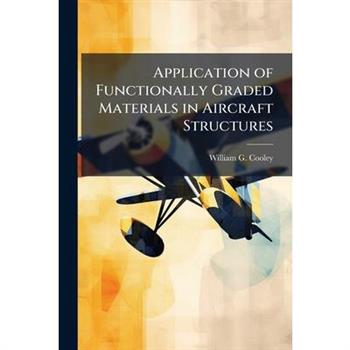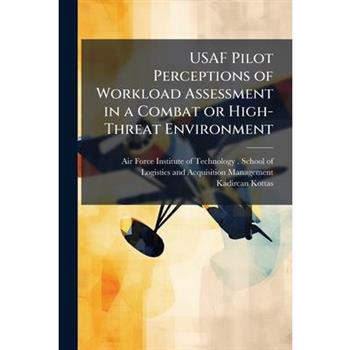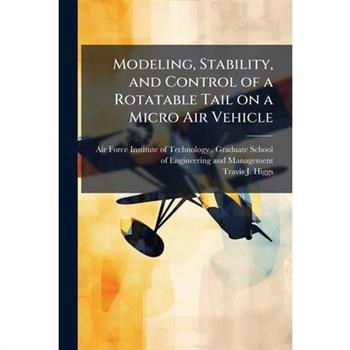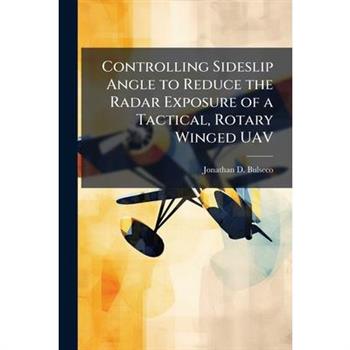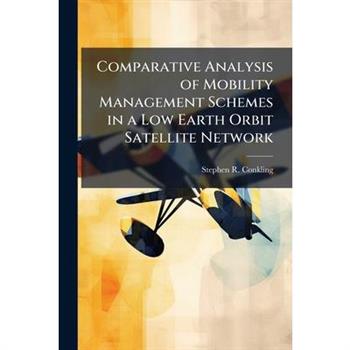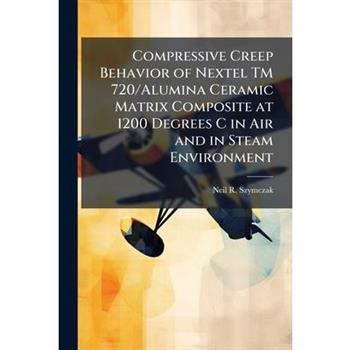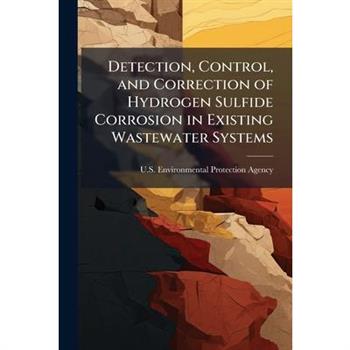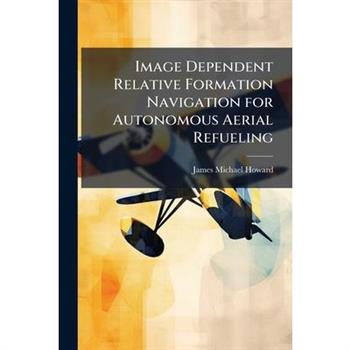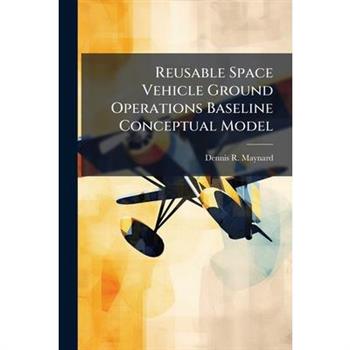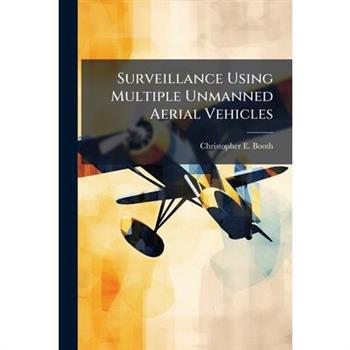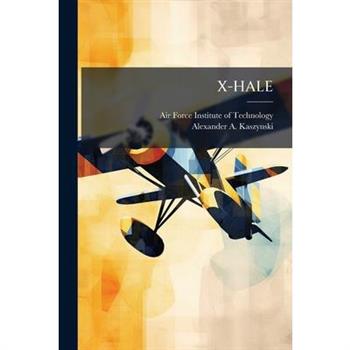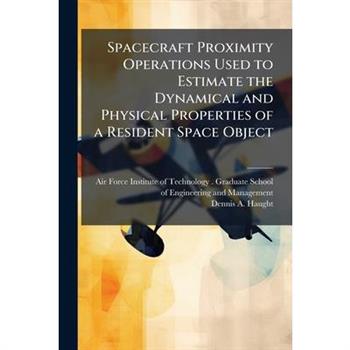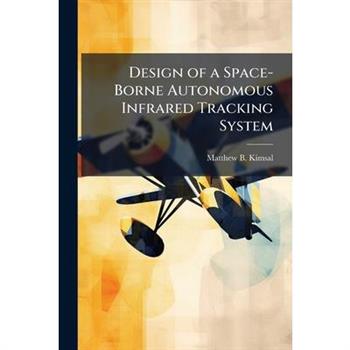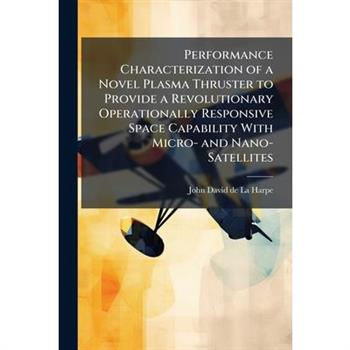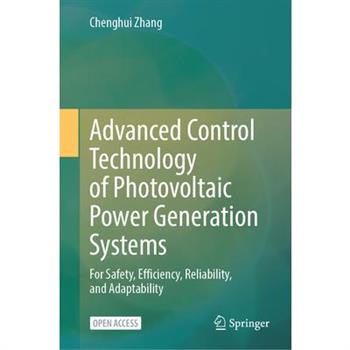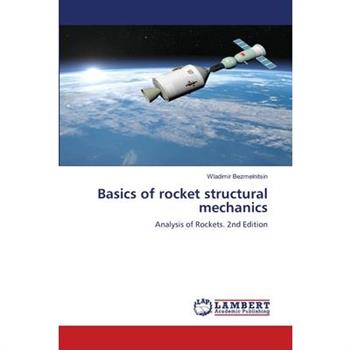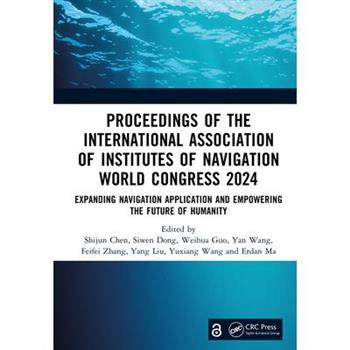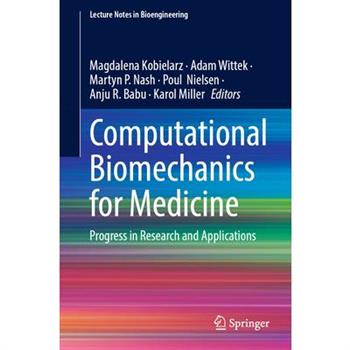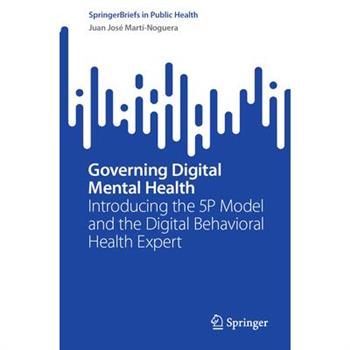Parachute Extraction of a Generic Store From a C-130
This thesis encompasses a feasibility analysis of a parachute extracted generic precision guided munition from the cargo bay of a C-130 aircraft in flight. This analysis utilizes the USAF Beggar code and incorporates full physics effects as well as aerodynamic loading assuming an inviscid aircraft and viscous store for a time-accurate solution. Both an immediate and time varying application of the parachute force are utilized as well as two different ordnance body styles at zero and 5 degrees AOA with the store placed on centerline and offset in the cargo bay. The time accurate parachute model is based on empirical data and more closely follows the force fall off as the parachute slows down during the extraction process. Both store body styles were successfully extracted from the cargo bay without contacting any portion of the delivery aircraft, following a safe trajectory down and away from all of the release conditions. The extraction took 1.7 seconds with the immediate application of the parachute force and 2.1 seconds when the time varying model was applied. The maximum roll seen during an extraction was 13 degrees, which was the largest movement on any axis.This work has been selected by scholars as being culturally important, and is part of the knowledge base of civilization as we know it. This work was reproduced from the original artifact, and remains as true to the original work as possible. Therefore, you will see the original copyright references, library stamps (as most of these works have been housed in our most important libraries around the world), and other notations in the work.This work is in the public domain in the United States of America, and possibly other nations. Within the United States, you may freely copy and distribute this work, as no entity (individual or corporate) has a copyright on the body of the work.As a reproduction of a historical artifact, this work may contain missing or blurred pages, poor pictures, errant marks, etc. Scholars believe, and we concur, that this work is important enough to be preserved, reproduced, and made generally available to the public. We appreciate your support of the preservation process, and thank you for being an important part of keeping this knowledge alive and relevant.
Description and Sampling of Contaminated Soils
The U.S. Environmental Protection Agency (EPA) was introduced on December 2, 1970 by President Richard Nixon. The agency is charged with protecting human health and the environment, by writing and enforcing regulations based on laws passed by Congress. The EPA's struggle to protect health and the environment is seen through each of its official publications. These publications outline new policies, detail problems with enforcing laws, document the need for new legislation, and describe new tactics to use to solve these issues. This collection of publications ranges from historic documents to reports released in the new millennium, and features works like: Bicycle for a Better Environment, Health Effects of Increasing Sulfur Oxides Emissions Draft, and Women and Environmental Health.This work has been selected by scholars as being culturally important, and is part of the knowledge base of civilization as we know it. This work was reproduced from the original artifact, and remains as true to the original work as possible. Therefore, you will see the original copyright references, library stamps (as most of these works have been housed in our most important libraries around the world), and other notations in the work.This work is in the public domain in the United States of America, and possibly other nations. Within the United States, you may freely copy and distribute this work, as no entity (individual or corporate) has a copyright on the body of the work.As a reproduction of a historical artifact, this work may contain missing or blurred pages, poor pictures, errant marks, etc. Scholars believe, and we concur, that this work is important enough to be preserved, reproduced, and made generally available to the public. We appreciate your support of the preservation process, and thank you for being an important part of keeping this knowledge alive and relevant.
Autonomous Air Refueling for Unmanned Aircraft Systems
Air Refueling (AR) demonstrates its critical importance on a daily basis in combat and peacetime missions all over the world. It is a crucial link enabling the global reach the US Air Force needs to fly, fight and win the current Global War on Terrorism (GWOT) and conduct various other missions in support of the US Military Strategy. Despite its critical importance to airpower, AR technology has changed little in the last 50 years. The Air Force uses the same basic refueling systems designed for Strategic Air Command (SAC) over a half-century ago. These systems require a heavy workload by the receiver pilot either maintaining position in a tight refueling envelope for the Boom System or actually making and maintaining a contact with the Probe and Drogue System. With unmanned platforms playing a larger role in the Intelligence, Surveillance and Reconnaissance (ISR) role and envisioned to one day replace the manned fighter, a system which can accomplish air refueling autonomously is being sought to enable the next generation of combat and ISR aircraft to safely conduct AR. The purpose of this research is to accomplish a cost/benefit analysis of air refueling Unmanned Aircraft Systems (UAS) used as ISR platforms, specifically high altitude endurance (HAE) class UAS such as the Global Hawk. Currently two different AAR systems are being developed and tested independently by the Air Force Research Lab (AFRL) and the Defense Advanced Research Projects Agency (DARPA) in conjunction with the Sierra Nevada Corporation. This research is not intended to determine the superiority of one system over the other however; it is only intended to weigh the benefits and costs of the AAR concept as a whole.This work has been selected by scholars as being culturally important, and is part of the knowledge base of civilization as we know it. This work was reproduced from the original artifact, and remains as true to the original work as possible. Therefore, you will see the original copyright references, library stamps (as most of these works have been housed in our most important libraries around the world), and other notations in the work.This work is in the public domain in the United States of America, and possibly other nations. Within the United States, you may freely copy and distribute this work, as no entity (individual or corporate) has a copyright on the body of the work.As a reproduction of a historical artifact, this work may contain missing or blurred pages, poor pictures, errant marks, etc. Scholars believe, and we concur, that this work is important enough to be preserved, reproduced, and made generally available to the public. We appreciate your support of the preservation process, and thank you for being an important part of keeping this knowledge alive and relevant.
Development of a Comprehensive Digital Avionics Curriculum for the Aeronautical Engineer
The purpose of this research was to develop a comprehensive digital avionics curriculum that will serve the needs of aeronautical engineering students at the Air Force Institute of Technology (AFIT). Due to the closing of the aeronautical engineering program at the Naval Postgraduate School, and the subsequent requirement to establish a digital avionics specialty course sequence at AFIT, a mature avionics curriculum does not yet exist that satisfies the needs of graduates who will serve as aeronautical engineers involved with the development, integration, testing, fielding, and supporting of military avionics systems as part of the overall aircraft system. Research was conducted through a comprehensive literature review and the use of a Delphi Technique survey process. 28 panel members representing the military, academe, and industry participated in a three round survey process that sought to identify the desired attributes of a newly-graduated engineer and the specific subject areas of study that should be included within the avionics curriculum. The result of this research was the development of a proposed three course curriculum that will instill the desired attributes within the aeronautical engineers and provide them with the avionics knowledge required at the correct level of proficiency. Recommendations on how to implement the proposed curriculum in an effective and timely manner are presented.This work has been selected by scholars as being culturally important, and is part of the knowledge base of civilization as we know it. This work was reproduced from the original artifact, and remains as true to the original work as possible. Therefore, you will see the original copyright references, library stamps (as most of these works have been housed in our most important libraries around the world), and other notations in the work.This work is in the public domain in the United States of America, and possibly other nations. Within the United States, you may freely copy and distribute this work, as no entity (individual or corporate) has a copyright on the body of the work.As a reproduction of a historical artifact, this work may contain missing or blurred pages, poor pictures, errant marks, etc. Scholars believe, and we concur, that this work is important enough to be preserved, reproduced, and made generally available to the public. We appreciate your support of the preservation process, and thank you for being an important part of keeping this knowledge alive and relevant.
Vacuum Chamber Construction and Contamination Study of a Micro Pulsed Plasma Thruster
The micro pulsed plasma thruster (micro-PPT) is a simple and versatile electric thruster capable of performing multiple missions, from precise attitude control on standard satellites to primary propulsion for nanosatellites. In order to fill this role as both industry and government move toward utilizing smaller satellites, micro-PPTs first need to be thoroughly tested on the ground. This study examines the deposition profile and rate of particle emission from the thruster so that satellite designers understand any potential contamination issues with sensitive instruments and solar panels.This work has been selected by scholars as being culturally important, and is part of the knowledge base of civilization as we know it. This work was reproduced from the original artifact, and remains as true to the original work as possible. Therefore, you will see the original copyright references, library stamps (as most of these works have been housed in our most important libraries around the world), and other notations in the work.This work is in the public domain in the United States of America, and possibly other nations. Within the United States, you may freely copy and distribute this work, as no entity (individual or corporate) has a copyright on the body of the work.As a reproduction of a historical artifact, this work may contain missing or blurred pages, poor pictures, errant marks, etc. Scholars believe, and we concur, that this work is important enough to be preserved, reproduced, and made generally available to the public. We appreciate your support of the preservation process, and thank you for being an important part of keeping this knowledge alive and relevant.
Application of Functionally Graded Materials in Aircraft Structures
A Functionally Graded Material (FGM) is a material which has a continuous variation of material properties through-the-thickness. This thesis will explore analysis of FGM flat plates and shell panels, and use FGM's unique characteristics to retrofit a cracked exhaust wash structure. FGMs are first characterized as flat plates under pressure and thermal loading. Next, FGM shell panels are characterized under thermal loading. Conclusions drawn from FGM characterization are used to develop a patch to retrofit a cracked aircraft exhaust wash structure. The exhaust wash structure is first analyzed to provide a baseline and then several FGM patches are evaluated on their ability to reduce stress and deflection. Finally, an exhaust wash panel made of FGM is analyzed.This work has been selected by scholars as being culturally important, and is part of the knowledge base of civilization as we know it. This work was reproduced from the original artifact, and remains as true to the original work as possible. Therefore, you will see the original copyright references, library stamps (as most of these works have been housed in our most important libraries around the world), and other notations in the work.This work is in the public domain in the United States of America, and possibly other nations. Within the United States, you may freely copy and distribute this work, as no entity (individual or corporate) has a copyright on the body of the work.As a reproduction of a historical artifact, this work may contain missing or blurred pages, poor pictures, errant marks, etc. Scholars believe, and we concur, that this work is important enough to be preserved, reproduced, and made generally available to the public. We appreciate your support of the preservation process, and thank you for being an important part of keeping this knowledge alive and relevant.
USAF Pilot Perceptions of Workload Assessment in a Combat or High-Threat Environment
This study analyzed the self-reported survey responses of 219 Air Force Pilots concerning their perceptions of workload assessment in a combat or a high-threat environment. The first objective of this study was to determine and compare the combat workload factors of varying importance in combat workload assessment by aircraft and mission type flown. The second objective was to examine the pilots' perception of combat mission in-flight workload. A stepwise regression model to predict the pilots' perceptions of in-flight workload using pilots' characteristic data was explored. Research conclusion varied among aircraft types. Combat workload items indicated, as "distractingly" important were similar for all aircraft types, while items in lower level of importance were impacted by aircraft type. Mean Combat Workload (CWL) scores of pilots from each aircraft type were not significantly different. Overall, it was concluded that surveying pilots who had flown in combat or high-threat environments provided useful responses to assess pilot workload; however, findings based on subjective assessments, provide tentative grounds for further research.This work has been selected by scholars as being culturally important, and is part of the knowledge base of civilization as we know it. This work was reproduced from the original artifact, and remains as true to the original work as possible. Therefore, you will see the original copyright references, library stamps (as most of these works have been housed in our most important libraries around the world), and other notations in the work.This work is in the public domain in the United States of America, and possibly other nations. Within the United States, you may freely copy and distribute this work, as no entity (individual or corporate) has a copyright on the body of the work.As a reproduction of a historical artifact, this work may contain missing or blurred pages, poor pictures, errant marks, etc. Scholars believe, and we concur, that this work is important enough to be preserved, reproduced, and made generally available to the public. We appreciate your support of the preservation process, and thank you for being an important part of keeping this knowledge alive and relevant.
Modeling, Stability, and Control of a Rotatable Tail on a Micro Air Vehicle
This research uses existing experimental wind tunnel data to develop a non-linear model that is used to characterize the stability of a flexible wing Micro Air Vehicle (MAV) with a rotatable tail. The experimental data are curve fit based on either angle of attack or angle of sideslip, and the coupled effect of tail rotation and tail deflection on the force and moment coefficients. Static optimization trims the input and state variables for Steady Level Unaccelerated Flight (SLUF). The resulting initial conditions are fed to an open loop non-linear Simulink/Matlab simulation. The study found that the bare MAV design is unstable, but parametric studies identified practical modifications that could be made to the MAV to improve its open loop stability characteristics. The study found that the coupling affect due to the dihedreal derivative, Cl, played a large role in destabilizing the lateral-directional dynamics and a feedback Stability Augmentation System is required for flight.This work has been selected by scholars as being culturally important, and is part of the knowledge base of civilization as we know it. This work was reproduced from the original artifact, and remains as true to the original work as possible. Therefore, you will see the original copyright references, library stamps (as most of these works have been housed in our most important libraries around the world), and other notations in the work.This work is in the public domain in the United States of America, and possibly other nations. Within the United States, you may freely copy and distribute this work, as no entity (individual or corporate) has a copyright on the body of the work.As a reproduction of a historical artifact, this work may contain missing or blurred pages, poor pictures, errant marks, etc. Scholars believe, and we concur, that this work is important enough to be preserved, reproduced, and made generally available to the public. We appreciate your support of the preservation process, and thank you for being an important part of keeping this knowledge alive and relevant.
Chlorine Dioxide for Wastewater Disinfection
The U.S. Environmental Protection Agency (EPA) was introduced on December 2, 1970 by President Richard Nixon. The agency is charged with protecting human health and the environment, by writing and enforcing regulations based on laws passed by Congress. The EPA's struggle to protect health and the environment is seen through each of its official publications. These publications outline new policies, detail problems with enforcing laws, document the need for new legislation, and describe new tactics to use to solve these issues. This collection of publications ranges from historic documents to reports released in the new millennium, and features works like: Bicycle for a Better Environment, Health Effects of Increasing Sulfur Oxides Emissions Draft, and Women and Environmental Health.This work has been selected by scholars as being culturally important, and is part of the knowledge base of civilization as we know it. This work was reproduced from the original artifact, and remains as true to the original work as possible. Therefore, you will see the original copyright references, library stamps (as most of these works have been housed in our most important libraries around the world), and other notations in the work.This work is in the public domain in the United States of America, and possibly other nations. Within the United States, you may freely copy and distribute this work, as no entity (individual or corporate) has a copyright on the body of the work.As a reproduction of a historical artifact, this work may contain missing or blurred pages, poor pictures, errant marks, etc. Scholars believe, and we concur, that this work is important enough to be preserved, reproduced, and made generally available to the public. We appreciate your support of the preservation process, and thank you for being an important part of keeping this knowledge alive and relevant.
Controlling Sideslip Angle to Reduce the Radar Exposure of a Tactical, Rotary Winged UAV
This work investigates another way of contributing to the radar minimization solution for air vehicles in a threat environment. While muchresearch has been conducted on structural solutions to radar exposure minimization, not much work has been done in the area of using control tocontinuously assess and present the smallest radar cross section of an air vehicle to oncoming threat radar systems by changing the aircraft'sorientation. This work looks at the application of sideslip/beta angle feedback control of an unmanned helicopter to minimize radar crosssection exposure in a hostile radar environment. A new way of controlling aircraft trajectory is introduced that incorporates both path andorientation optimization feedback; the aircraft's heading is controlled to orient the vehicle in a way that reduces its radar cross section, whilesideslip angle is used to control the aircraft's path. A representative hostile environment is created and results show that a substantial reductionin radar cross section exposure can be achieved with beta feedback control. A linear state space model is derived for the OH-6A helicopter withthe JANRAD software program. Eigenstructure assignment is used to shape the response of the helicopter into desired response modes. AMatlab based flight control system is developed around the derived helicopter model with altitude, heading, and beta angle command signalsthat drive four conventional helicopter control inputs.This work has been selected by scholars as being culturally important, and is part of the knowledge base of civilization as we know it. This work was reproduced from the original artifact, and remains as true to the original work as possible. Therefore, you will see the original copyright references, library stamps (as most of these works have been housed in our most important libraries around the world), and other notations in the work.This work is in the public domain in the United States of America, and possibly other nations. Within the United States, you may freely copy and distribute this work, as no entity (individual or corporate) has a copyright on the body of the work.As a reproduction of a historical artifact, this work may contain missing or blurred pages, poor pictures, errant marks, etc. Scholars believe, and we concur, that this work is important enough to be preserved, reproduced, and made generally available to the public. We appreciate your support of the preservation process, and thank you for being an important part of keeping this knowledge alive and relevant.
A Metagenomic Analysis of Microbial Contamination in Aviation Fuels
Microbial contamination in aviation fuel arises due to the impracticality of keeping fuel tanks sterile and the inevitable presence of water from condensation. Microbial contaminants in aviation fuels are a concern because of their potential to degrade the fuel, accelerate corrosion within the fuel tank, and threaten flight safety. This research aids in mitigating those problems by comprehensively characterizing the microbial communities affecting aviation fuels. Advances in molecular biological techniques have allowed for the identification of microorganisms which were not identified by the traditional culture-based methodologies used in previous studies. This study employed a molecular method known as 16S rDNA gene analysis to describe the microbial communities in aviation fuel. The microbial communities in JP-8, Jet A, and biodiesel were evaluated at the phylum and genus levels of taxonomy. The JP-8 community was found to be much richer than both the Jet A and biodiesel community. The biodiesel community was found to be a subset of the JP-8 community. A small subset of microorganisms was found to exist across all three fuels while the majority of identified microorganisms were endemic to a single fuel type. Rarefaction analysis showed that further sampling is likely to reveal additional diversity.This work has been selected by scholars as being culturally important, and is part of the knowledge base of civilization as we know it. This work was reproduced from the original artifact, and remains as true to the original work as possible. Therefore, you will see the original copyright references, library stamps (as most of these works have been housed in our most important libraries around the world), and other notations in the work.This work is in the public domain in the United States of America, and possibly other nations. Within the United States, you may freely copy and distribute this work, as no entity (individual or corporate) has a copyright on the body of the work.As a reproduction of a historical artifact, this work may contain missing or blurred pages, poor pictures, errant marks, etc. Scholars believe, and we concur, that this work is important enough to be preserved, reproduced, and made generally available to the public. We appreciate your support of the preservation process, and thank you for being an important part of keeping this knowledge alive and relevant.
Comparative Analysis of Mobility Management Schemes in a Low Earth Orbit Satellite Network
In the 60's the United Status and the Union of Soviet Socialist Republics engaged in a "space race" to be the first to put a man on the moon. Today, the space race is between large multinational telecommunication corporations with the winner receiving the financial rewards by providing communication services to the billions without even a simple telephone. Many entrants are using Low Earth Orbit (LEO) satellites to provide the communications infrastructure, but the number of customers a satellite can support is limited by bandwidth available. This resource must be used efficiently, and this involves reducing the management overhead. This thesis investigates one aspect of management overhead, the bandwidth cost associated with mobility management. This thesis provides a performance analysis of three different mobility management topologies and their associated protocols when used in a LEO satellite constellation. Simulations were developed to compare two aspects of mobility management protocols. The first aspect was to determine which is the better location for the Visitor Location Register (VLR) and Authentication Center, collocated with the Home Location Register in the terrestrial gateways or placed on the communications satellites.This work has been selected by scholars as being culturally important, and is part of the knowledge base of civilization as we know it. This work was reproduced from the original artifact, and remains as true to the original work as possible. Therefore, you will see the original copyright references, library stamps (as most of these works have been housed in our most important libraries around the world), and other notations in the work.This work is in the public domain in the United States of America, and possibly other nations. Within the United States, you may freely copy and distribute this work, as no entity (individual or corporate) has a copyright on the body of the work.As a reproduction of a historical artifact, this work may contain missing or blurred pages, poor pictures, errant marks, etc. Scholars believe, and we concur, that this work is important enough to be preserved, reproduced, and made generally available to the public. We appreciate your support of the preservation process, and thank you for being an important part of keeping this knowledge alive and relevant.
Space Launch Operations and the Lean Aerospace Initiative
The lean concepts of right thing, right place, and at the right time can be applied to current and future launch systems. While much has been written on the concept of lean manufacturing and production, this thesis is the first in a series of studies from the Air Force Institute of Technology and Massachusetts Institute of Technology to investigate lean space launch operations. Nevertheless, many of the principles of lean thinking that have been applied to manufacturing and production are relevant to space operation enterprises including launch operations. The Lean Aerospace Initiative (LAI) and the concepts of lean thinking are discussed in this thesis. A review of launch system requirements and opportunities for lean practices is also presented. This is followed by an analysis of current expendable launch procedures to identify truly lean, value-added steps in launch operations. The thesis also presents a case study highlighting current Delta II expendable launch processing operations. Results of the study show how lean principles have helped the Delta launch team drastically reduce on-pad time, restructure its testing philosophy, and streamline overall operations flow. Many of these practices can be applied to other expendable launch operations and provide a strong systems baseline for the next generation of vehicles such as the Evolved Expendable Launch Vehicle (EELV).This work has been selected by scholars as being culturally important, and is part of the knowledge base of civilization as we know it. This work was reproduced from the original artifact, and remains as true to the original work as possible. Therefore, you will see the original copyright references, library stamps (as most of these works have been housed in our most important libraries around the world), and other notations in the work.This work is in the public domain in the United States of America, and possibly other nations. Within the United States, you may freely copy and distribute this work, as no entity (individual or corporate) has a copyright on the body of the work.As a reproduction of a historical artifact, this work may contain missing or blurred pages, poor pictures, errant marks, etc. Scholars believe, and we concur, that this work is important enough to be preserved, reproduced, and made generally available to the public. We appreciate your support of the preservation process, and thank you for being an important part of keeping this knowledge alive and relevant.
Thrust and Performance Study of Micro Pulsed Plasma Thrusters
This research is focused on several areas of the ?1/4PPT performance. An important idea studied is the effect of lifetime use on the performance. The thruster is fired for a simulated lifetime of use to see if there is an impact on the thrust of the thruster later in life. Also vital is the efficiency of the thruster. A ?1/4PPT performing at max efficiency will ionize all ablated material; however, we know that not to be the case. In this research the effort is made to collect these non-ionized particles in order to measure their mass post-test. With this collected mass and a knowledge of how much the thruster has ablated, it can be determined what percentage of the propellant has been ionized. With the non-ionized particles also comes a concern about contamination. Knowing the amount of particles that can collect at the end of a lifetime of use allows a better understanding of what contamination issues a spacecraft may have and what precautions need to be made.This work has been selected by scholars as being culturally important, and is part of the knowledge base of civilization as we know it. This work was reproduced from the original artifact, and remains as true to the original work as possible. Therefore, you will see the original copyright references, library stamps (as most of these works have been housed in our most important libraries around the world), and other notations in the work.This work is in the public domain in the United States of America, and possibly other nations. Within the United States, you may freely copy and distribute this work, as no entity (individual or corporate) has a copyright on the body of the work.As a reproduction of a historical artifact, this work may contain missing or blurred pages, poor pictures, errant marks, etc. Scholars believe, and we concur, that this work is important enough to be preserved, reproduced, and made generally available to the public. We appreciate your support of the preservation process, and thank you for being an important part of keeping this knowledge alive and relevant.
Crew Exploration Vehicle Skip Entry Trajectory
This research effort develops a program using MATLAB to solve the equations of motion for the atmospheric reentry of the Crew Exploration Vehicle (CEV) which is assumed to be in the phase of a lunar return trajectory that could be initiated any time during the mission. The essential reason for this research is to find a solution for the problem of an unplanned lunar return in addition to the normal procedures. Unlike Apollo type missions, the CEV would still be able to land on any preplanned available landing sites without any additional delay. In Apollo type missions, the return phase had to be initiated in a restricted time window so that the crew module could enter the atmosphere at the preplanned time and be able to land at the planned landing site. Using skip entry procedures, landing location and time will be more accurate in addition to having the time flexibility for reentry. This MATLAB program is designed to find the reentry parameters for given landing location according to the current alignment of the moon using a lunar return speed including the atmospheric trajectory of the CEV.This work has been selected by scholars as being culturally important, and is part of the knowledge base of civilization as we know it. This work was reproduced from the original artifact, and remains as true to the original work as possible. Therefore, you will see the original copyright references, library stamps (as most of these works have been housed in our most important libraries around the world), and other notations in the work.This work is in the public domain in the United States of America, and possibly other nations. Within the United States, you may freely copy and distribute this work, as no entity (individual or corporate) has a copyright on the body of the work.As a reproduction of a historical artifact, this work may contain missing or blurred pages, poor pictures, errant marks, etc. Scholars believe, and we concur, that this work is important enough to be preserved, reproduced, and made generally available to the public. We appreciate your support of the preservation process, and thank you for being an important part of keeping this knowledge alive and relevant.
Compressive Creep Behavior of Nextel TM 720/Alumina Ceramic Matrix Composite at 1200 Degrees C in Air and in Steam Environment
The aerospace community continues to push the envelope in engineering aircraft that fly higher, faster, and safer while operating with a greater degree of efficiency. To meet these operational requirements innovative aerospace components must be designed to operate in aggressive environments. The effects of creep loading history on the tensile and compressive material behavior will also be examined. The primary strengths of the N720/A composite are its oxide/oxide composition which inherently resists oxidation and a porous matrix which enables crack deflection producing enhanced matrix damage tolerance. Mechanical testing showed a significant decrease in the compressive performance of N720/A when exposed to steam environment. Conversely, N720/A specimens tested in compressive creep in air experienced an increase in compressive performance. SEM analysis showed that densification of the ?簣-alumina matrix occurred in both test environments. In air densification sinters the matrix resulting in a strengthening effect. Whereas, in steam environment analysis shows the addition of hydrogen induces hydrothermal softening of the matrix resulting in a significant loss of the compressive performance of N720/A.This work has been selected by scholars as being culturally important, and is part of the knowledge base of civilization as we know it. This work was reproduced from the original artifact, and remains as true to the original work as possible. Therefore, you will see the original copyright references, library stamps (as most of these works have been housed in our most important libraries around the world), and other notations in the work.This work is in the public domain in the United States of America, and possibly other nations. Within the United States, you may freely copy and distribute this work, as no entity (individual or corporate) has a copyright on the body of the work.As a reproduction of a historical artifact, this work may contain missing or blurred pages, poor pictures, errant marks, etc. Scholars believe, and we concur, that this work is important enough to be preserved, reproduced, and made generally available to the public. We appreciate your support of the preservation process, and thank you for being an important part of keeping this knowledge alive and relevant.
Detection, Control, and Correction of Hydrogen Sulfide Corrosion in Existing Wastewater Systems
The U.S. Environmental Protection Agency (EPA) was introduced on December 2, 1970 by President Richard Nixon. The agency is charged with protecting human health and the environment, by writing and enforcing regulations based on laws passed by Congress. The EPA's struggle to protect health and the environment is seen through each of its official publications. These publications outline new policies, detail problems with enforcing laws, document the need for new legislation, and describe new tactics to use to solve these issues. This collection of publications ranges from historic documents to reports released in the new millennium, and features works like: Bicycle for a Better Environment, Health Effects of Increasing Sulfur Oxides Emissions Draft, and Women and Environmental Health.This work has been selected by scholars as being culturally important, and is part of the knowledge base of civilization as we know it. This work was reproduced from the original artifact, and remains as true to the original work as possible. Therefore, you will see the original copyright references, library stamps (as most of these works have been housed in our most important libraries around the world), and other notations in the work.This work is in the public domain in the United States of America, and possibly other nations. Within the United States, you may freely copy and distribute this work, as no entity (individual or corporate) has a copyright on the body of the work.As a reproduction of a historical artifact, this work may contain missing or blurred pages, poor pictures, errant marks, etc. Scholars believe, and we concur, that this work is important enough to be preserved, reproduced, and made generally available to the public. We appreciate your support of the preservation process, and thank you for being an important part of keeping this knowledge alive and relevant.
A Methodology for Simulating the Joint Strike Fighter's (JSF) Prognostics and Health Management System
The Autonomic Logistics System Simulation (ALSim) was developed to provide decision makers a tool to make informed decisions regarding the Joint Strike Fighter's (JSF) Autonomic Logistics System (ALS). The benefit to ALS is that it provides real time maintenance information to ground maintenance crews, supply depots, and air planners to efficiently manage the availability of JSF aircraft. This thesis effort focuses on developing a methodology to model the Prognostics and Health Management (PHM) component of ALS. The PHM component of JSF is what actually monitors the aircraft status. To develop a PHM methodology to use in ALSim a neural network approach is used. Notional JSF prognostic signals were generated using an interactive Java application, which were then used to build and train a neural network. The neural network is trained to predict when a component is healthy and/or failing. The results of the neural network analysis are meaningful failure detection times and false alarm rates. The analysis presents a batching approach to train the neural network, and looks at the sensitivity of the results to batch size and the neural network classification rule used. The final element of the research is implementing the PHM methodology in ALSim.This work has been selected by scholars as being culturally important, and is part of the knowledge base of civilization as we know it. This work was reproduced from the original artifact, and remains as true to the original work as possible. Therefore, you will see the original copyright references, library stamps (as most of these works have been housed in our most important libraries around the world), and other notations in the work.This work is in the public domain in the United States of America, and possibly other nations. Within the United States, you may freely copy and distribute this work, as no entity (individual or corporate) has a copyright on the body of the work.As a reproduction of a historical artifact, this work may contain missing or blurred pages, poor pictures, errant marks, etc. Scholars believe, and we concur, that this work is important enough to be preserved, reproduced, and made generally available to the public. We appreciate your support of the preservation process, and thank you for being an important part of keeping this knowledge alive and relevant.
Effect of Hold Times on Fatigue Behavior of Nextel 720/Alumina Ceramic Matrix Composite at 1200?簞C in Air And in Steam Environment
The aerospace field requires structural materials that can maintain superior mechanical properties while subjected to high temperatures and oxidizing environments. This research investigated the effect of hold times at maximum load on fatigue performance of a Nextel"720/Alumina ceramic matrix composite at 1200-C, explored the influence of environment on material response to cyclic loading with hold times at maximum load, and assessed the effects of loading history on material behavior and environmental durability. The N720/A composite relies on an oxide/oxide composition for inherent oxidation resistance and a porous matrix with no interphase between the fiber and matrix for damage tolerance. Mechanical testing results showed a significant decrease in material life and performance in a steam environment when compared to tests conducted in a laboratory air environment. Prior fatigue of specimens tested in an air environment resulted in an order of magnitude increase in creep life. Fracture surface observations with a Scanning Electron Microscope showed a correlation between an increase in fiber pull-out and increased time to failure. A qualitative spectral analysis indicated evidence of silicon species migration from the mullite phase of the fiber to the matrix, especially in the steam environment. This may be the cause of the decreased creep performance of the material in the steam environment.This work has been selected by scholars as being culturally important, and is part of the knowledge base of civilization as we know it. This work was reproduced from the original artifact, and remains as true to the original work as possible. Therefore, you will see the original copyright references, library stamps (as most of these works have been housed in our most important libraries around the world), and other notations in the work.This work is in the public domain in the United States of America, and possibly other nations. Within the United States, you may freely copy and distribute this work, as no entity (individual or corporate) has a copyright on the body of the work.As a reproduction of a historical artifact, this work may contain missing or blurred pages, poor pictures, errant marks, etc. Scholars believe, and we concur, that this work is important enough to be preserved, reproduced, and made generally available to the public. We appreciate your support of the preservation process, and thank you for being an important part of keeping this knowledge alive and relevant.
Image Dependent Relative Formation Navigation for Autonomous Aerial Refueling
This research tests the feasibility, accuracy, and reliability of a predictive rendering and holistic comparison algorithm with use of an optical sensor to provide relative distance and position behind a lead or tanker aircraft. Using an accurate model of a tanker, an algorithm renders image(s) for comparison with actual collected images by a camera installed on the receiver aircraft. Based on this comparison, information used to create the rendered image(s) is used to provide the relative navigation solution required for autonomous air refueling. Given enough predicted images and processing time, this approach should reliably find an accurate solution. Building on previous work, this research aims to minimize the number of required rendered images to provide a real-time navigational solution with sufficient accuracy for an auto-pilot controller installed on future Unmanned Aircraft Systems.This work has been selected by scholars as being culturally important, and is part of the knowledge base of civilization as we know it. This work was reproduced from the original artifact, and remains as true to the original work as possible. Therefore, you will see the original copyright references, library stamps (as most of these works have been housed in our most important libraries around the world), and other notations in the work.This work is in the public domain in the United States of America, and possibly other nations. Within the United States, you may freely copy and distribute this work, as no entity (individual or corporate) has a copyright on the body of the work.As a reproduction of a historical artifact, this work may contain missing or blurred pages, poor pictures, errant marks, etc. Scholars believe, and we concur, that this work is important enough to be preserved, reproduced, and made generally available to the public. We appreciate your support of the preservation process, and thank you for being an important part of keeping this knowledge alive and relevant.
Investigation of Aerobraking to Return the Space Maneuver Vehicle to Low Earth Orbit From Geotransfer Orbit
This study investigated the use of ballistic and "Double-Dip'' aerobraking reentry to return the Space Maneuver Vehicle (SMV) from geotransfer orbit in no more than two atmosphere passes. Lift and drag accelerations were applied to the two-body problem when either of their magnitudes exceeded 1/1000 g. Lift and drag coefficients, along with the SMV model, were taken from Investigation of Atmospheric Reentry for the Space Maneuver Vehicle by Captain McNabb, AFIT/GA/ENY/04-M03. Target perigees were formulated using the two-body problem. The orbit from each target perigee was numerically integrated around a planar earth model using a fourth order Runge-Kutta method. Ballistic and "Double-Dip'' reentry schemes were attempted with 45 and 70 km altitude floors. Ballistic reentry produced a near circular, low earth orbit when the SMV's true perigee altitude resided between 66.801 and 68.449 km for a one pass reentry and between 72.226 and 73.445 km for a two pass reentry. "Double-Dip'' reentry produced a near circular, low earth orbit when the SMV's perigee altitude rested between 62.416 and 64.962 km. The resulting perigee windows, their respective heating rates, and experienced accelerations were analyzed. Effects of uncertainty in the atmosphere model on successful perigee windows for each reentry scheme were analyzed by repeating the simulation with an increased atmospheric density.This work has been selected by scholars as being culturally important, and is part of the knowledge base of civilization as we know it. This work was reproduced from the original artifact, and remains as true to the original work as possible. Therefore, you will see the original copyright references, library stamps (as most of these works have been housed in our most important libraries around the world), and other notations in the work.This work is in the public domain in the United States of America, and possibly other nations. Within the United States, you may freely copy and distribute this work, as no entity (individual or corporate) has a copyright on the body of the work.As a reproduction of a historical artifact, this work may contain missing or blurred pages, poor pictures, errant marks, etc. Scholars believe, and we concur, that this work is important enough to be preserved, reproduced, and made generally available to the public. We appreciate your support of the preservation process, and thank you for being an important part of keeping this knowledge alive and relevant.
Reusable Space Vehicle Ground Operations Baseline Conceptual Model
Modeling efforts for future space operation vehicles at the United States Air Force Research Lab's Air Vehicles Directorate have been focused towards the in flight mission. To better serve the research and development effort, a simulation of the ground operations is required allowing for trade-offs within turnaround operations and between the components that drive those procedures. However, before a simulation can be developed a conceptual model must be generated to guide the model building process. This research provides a baseline conceptual model for reusable space vehicles based on the space shuttle as the only operational vehicle of its kind. The model is built utilizing the Integrated Definition (IDEF) methodology, specifically IDEF3. IDEF3 is focused towards process-viewpoint diagramming and layout.This work has been selected by scholars as being culturally important, and is part of the knowledge base of civilization as we know it. This work was reproduced from the original artifact, and remains as true to the original work as possible. Therefore, you will see the original copyright references, library stamps (as most of these works have been housed in our most important libraries around the world), and other notations in the work.This work is in the public domain in the United States of America, and possibly other nations. Within the United States, you may freely copy and distribute this work, as no entity (individual or corporate) has a copyright on the body of the work.As a reproduction of a historical artifact, this work may contain missing or blurred pages, poor pictures, errant marks, etc. Scholars believe, and we concur, that this work is important enough to be preserved, reproduced, and made generally available to the public. We appreciate your support of the preservation process, and thank you for being an important part of keeping this knowledge alive and relevant.
Surveillance Using Multiple Unmanned Aerial Vehicles
This study examines the performance and limitations of a heuristic cooperative control (CC) surveillance algorithm for multiple unmanned aerial vehicles (UAVs) under both simulation and demonstration. The algorithm generates Dubin's based paths and provides velocity feedback to accomplish simultaneous arrival onto a surveillance orbit around the target and maintains position while orbiting. The performance was tested under multiple wind conditions in simulation and actual winds during flight testing. Both position accuracy and target visibility were examined.This work has been selected by scholars as being culturally important, and is part of the knowledge base of civilization as we know it. This work was reproduced from the original artifact, and remains as true to the original work as possible. Therefore, you will see the original copyright references, library stamps (as most of these works have been housed in our most important libraries around the world), and other notations in the work.This work is in the public domain in the United States of America, and possibly other nations. Within the United States, you may freely copy and distribute this work, as no entity (individual or corporate) has a copyright on the body of the work.As a reproduction of a historical artifact, this work may contain missing or blurred pages, poor pictures, errant marks, etc. Scholars believe, and we concur, that this work is important enough to be preserved, reproduced, and made generally available to the public. We appreciate your support of the preservation process, and thank you for being an important part of keeping this knowledge alive and relevant.
Anaerobic Sludge Digestion
The U.S. Environmental Protection Agency (EPA) was introduced on December 2, 1970 by President Richard Nixon. The agency is charged with protecting human health and the environment, by writing and enforcing regulations based on laws passed by Congress. The EPA's struggle to protect health and the environment is seen through each of its official publications. These publications outline new policies, detail problems with enforcing laws, document the need for new legislation, and describe new tactics to use to solve these issues. This collection of publications ranges from historic documents to reports released in the new millennium, and features works like: Bicycle for a Better Environment, Health Effects of Increasing Sulfur Oxides Emissions Draft, and Women and Environmental Health.This work has been selected by scholars as being culturally important, and is part of the knowledge base of civilization as we know it. This work was reproduced from the original artifact, and remains as true to the original work as possible. Therefore, you will see the original copyright references, library stamps (as most of these works have been housed in our most important libraries around the world), and other notations in the work.This work is in the public domain in the United States of America, and possibly other nations. Within the United States, you may freely copy and distribute this work, as no entity (individual or corporate) has a copyright on the body of the work.As a reproduction of a historical artifact, this work may contain missing or blurred pages, poor pictures, errant marks, etc. Scholars believe, and we concur, that this work is important enough to be preserved, reproduced, and made generally available to the public. We appreciate your support of the preservation process, and thank you for being an important part of keeping this knowledge alive and relevant.
A Laboratory Study to Investigate Gaseous Emissions and Solids Decomposition During Composting of Municipal Solid Wastes
The U.S. Environmental Protection Agency (EPA) was introduced on December 2, 1970 by President Richard Nixon. The agency is charged with protecting human health and the environment, by writing and enforcing regulations based on laws passed by Congress. The EPA's struggle to protect health and the environment is seen through each of its official publications. These publications outline new policies, detail problems with enforcing laws, document the need for new legislation, and describe new tactics to use to solve these issues. This collection of publications ranges from historic documents to reports released in the new millennium, and features works like: Bicycle for a Better Environment, Health Effects of Increasing Sulfur Oxides Emissions Draft, and Women and Environmental Health.This work has been selected by scholars as being culturally important, and is part of the knowledge base of civilization as we know it. This work was reproduced from the original artifact, and remains as true to the original work as possible. Therefore, you will see the original copyright references, library stamps (as most of these works have been housed in our most important libraries around the world), and other notations in the work.This work is in the public domain in the United States of America, and possibly other nations. Within the United States, you may freely copy and distribute this work, as no entity (individual or corporate) has a copyright on the body of the work.As a reproduction of a historical artifact, this work may contain missing or blurred pages, poor pictures, errant marks, etc. Scholars believe, and we concur, that this work is important enough to be preserved, reproduced, and made generally available to the public. We appreciate your support of the preservation process, and thank you for being an important part of keeping this knowledge alive and relevant.
X-Hale
In conjunction with the Air Force Institute of Technology (AFIT) and the Air Force Research Laboratory (AFRL), the University of Michigan has designed and is currently building a remotely piloted aircraft (RPA) experimental high altitude long endurance (X-HALE) aircraft to collect non-linear aeroelastic data to validate HALE aircraft design codes developed by academia, industry, and the federal government. While X-HALE is representative of HALE aircraft, the manufacturing and evaluation techniques are applicable to larger full size HALE aircraft such as the concepts being developed under Defense Advanced Research Projects Agency's (DARPA's) Vulture program. This paper documents the development of the X-HALE model to date including a history of the programmatic decisions, basic model configuration, geometric considerations, sensor and system architecture, and manufacturing challenges. Lessons learned from the prototyping include the evolutionary growth of X-HALE's joiner blocks and the manufacturing process of the composite wings. Furthermore, late in the design process, a series of aeroelastic simulations using the Nonlinear Aeroelastic Simulation Toolbox (NAST) developed at the University of Michigan demonstrated the need for a rotating vertical/horizontal stabilizer to aid in the recovery of the vehicle from unstable nonlinear coupled lateral dynamic "dutch roll like" motion. The documentation and development of X-HALE is critical to the programmatic goal of providing a complete nonlinear aeroelastic data set for the validation of nonlinear aeroelastic analytical tools for government, industry and academia.This work has been selected by scholars as being culturally important, and is part of the knowledge base of civilization as we know it. This work was reproduced from the original artifact, and remains as true to the original work as possible. Therefore, you will see the original copyright references, library stamps (as most of these works have been housed in our most important libraries around the world), and other notations in the work.This work is in the public domain in the United States of America, and possibly other nations. Within the United States, you may freely copy and distribute this work, as no entity (individual or corporate) has a copyright on the body of the work.As a reproduction of a historical artifact, this work may contain missing or blurred pages, poor pictures, errant marks, etc. Scholars believe, and we concur, that this work is important enough to be preserved, reproduced, and made generally available to the public. We appreciate your support of the preservation process, and thank you for being an important part of keeping this knowledge alive and relevant.
Burning Tires for Fuel and Tire Pyrolysis
The U.S. Environmental Protection Agency (EPA) was introduced on December 2, 1970 by President Richard Nixon. The agency is charged with protecting human health and the environment, by writing and enforcing regulations based on laws passed by Congress. The EPA's struggle to protect health and the environment is seen through each of its official publications. These publications outline new policies, detail problems with enforcing laws, document the need for new legislation, and describe new tactics to use to solve these issues. This collection of publications ranges from historic documents to reports released in the new millennium, and features works like: Bicycle for a Better Environment, Health Effects of Increasing Sulfur Oxides Emissions Draft, and Women and Environmental Health.This work has been selected by scholars as being culturally important, and is part of the knowledge base of civilization as we know it. This work was reproduced from the original artifact, and remains as true to the original work as possible. Therefore, you will see the original copyright references, library stamps (as most of these works have been housed in our most important libraries around the world), and other notations in the work.This work is in the public domain in the United States of America, and possibly other nations. Within the United States, you may freely copy and distribute this work, as no entity (individual or corporate) has a copyright on the body of the work.As a reproduction of a historical artifact, this work may contain missing or blurred pages, poor pictures, errant marks, etc. Scholars believe, and we concur, that this work is important enough to be preserved, reproduced, and made generally available to the public. We appreciate your support of the preservation process, and thank you for being an important part of keeping this knowledge alive and relevant.
Spacecraft Proximity Operations Used to Estimate the Dynamical and Physical Properties of a Resident Space Object
When conducting a space proximity operation, developing high-fidelity estimates of the dynamical and physical properties of a Resident Space Object (RSO)based on post-rendezvous observational data acquired, is imperative for the understanding of the RSO itself and the operating environment. This research investigatesthe estimation of relative motion dynamics, rotational dynamics, and the feasibilityof estimating the moments of inertia of a RSO. Using the Hill-Clohessy-Wiltshire equations, rigid-body dynamics, and estimation theory, a nonlinear least squaresestimation algorithm is implemented in the processing of range data from tracked observation points on the RSO body. Through simulation, it was determined that accurately estimating the relative motion and rotational dynamics is possible. However directly estimating the moments of inertia using range data proved to be problematicand exposed a possible observability limitation. Yet in general, the solutions were heavily dependent on the quality of the a priori knowledge as well as the reduction of solution ambiguity through the use of multiple observational data sets.This work has been selected by scholars as being culturally important, and is part of the knowledge base of civilization as we know it. This work was reproduced from the original artifact, and remains as true to the original work as possible. Therefore, you will see the original copyright references, library stamps (as most of these works have been housed in our most important libraries around the world), and other notations in the work.This work is in the public domain in the United States of America, and possibly other nations. Within the United States, you may freely copy and distribute this work, as no entity (individual or corporate) has a copyright on the body of the work.As a reproduction of a historical artifact, this work may contain missing or blurred pages, poor pictures, errant marks, etc. Scholars believe, and we concur, that this work is important enough to be preserved, reproduced, and made generally available to the public. We appreciate your support of the preservation process, and thank you for being an important part of keeping this knowledge alive and relevant.
Alternative Pulse Detonation Engine Ignition System Investigation Through Detonation Splitting
A Pulse Detonation Engine (PDE) combusts fuel air mixtures through a form of combustion: detonation. The resulting change in momentum produces thrust. Recent PDE research has focused on designing working subsystems. This investigation continued this trend by examining ignition system alternatives. Existing designs required spark plugs in each separate thrust tube to ignite premixed reactants. A single thrust tube could require the spark plug to fire hundreds of times per second for long durations. The goal was to minimize complexity and increase reliability by limiting the number of ignition sources. This research examined using a continuously propagating detonation wave as both a thrust mechanism and an ignition system requiring only one initial ignition source. This investigation was a proof of concept for such an ignition system. First a systematic look at single tube geometric effects on detonations was made. These results were used to further examine configurations for splitting detonations, physically dividing one detonation wave into two separate detonation waves. With this knowledge a dual thrust tube system was built and tested proving that a single spark could be used to initiate detonation in separate thrust tubes. Finally, a new tripping device for better deflagration to detonation transition (DDT) was examined. Existing devices induced DDT axially. The new device attempted to reflect an incoming detonation to initiate direct DDT in a cross flow.This work has been selected by scholars as being culturally important, and is part of the knowledge base of civilization as we know it. This work was reproduced from the original artifact, and remains as true to the original work as possible. Therefore, you will see the original copyright references, library stamps (as most of these works have been housed in our most important libraries around the world), and other notations in the work.This work is in the public domain in the United States of America, and possibly other nations. Within the United States, you may freely copy and distribute this work, as no entity (individual or corporate) has a copyright on the body of the work.As a reproduction of a historical artifact, this work may contain missing or blurred pages, poor pictures, errant marks, etc. Scholars believe, and we concur, that this work is important enough to be preserved, reproduced, and made generally available to the public. We appreciate your support of the preservation process, and thank you for being an important part of keeping this knowledge alive and relevant.
Design of a Space-Borne Autonomous Infrared Tracking System
Complete characterization of the space environment in support of the United States' goal of Space Situational Awareness is not currently achievable. When confronted with recent increases in the deployment and miniaturization of microsatellites by numerous nations, the questions of foreign space capabilities are magnified. This study sought to determine the feasibility of and experimentally demonstrate a microsatellite capability to autonomously loiter about and track a target satellite. Various methods of passive remote sensing were investigated to determine the best means of detecting and tracking a target in space. Microbolometer-based infrared sensors were identified as the best sensor for several reasons, primarily due to their ability to track in the absence of light. A representative system was constructed for demonstration in AFIT's SIMSAT laboratory. Software modeling results identified open-loop instability, and therefore the requirement for closed-loop control. A simple PD control algorithm served as the basis for control, and a pseudo-feed-forward term was added to improve the results. The feed-forward term was derived form orbital dynamics as the rate at which the chase satellite traverses around an ellipse formed in the target's frame of reference. Reduction in pointing errors of up to 67% were found in simulations. Non-optimal yet successful tracking results were obtained in the laboratory with a hardware-in-the-loop model for both step and moving inputs. With minor modification, this infrared tracking system could be implemented onboard a microsatellite.This work has been selected by scholars as being culturally important, and is part of the knowledge base of civilization as we know it. This work was reproduced from the original artifact, and remains as true to the original work as possible. Therefore, you will see the original copyright references, library stamps (as most of these works have been housed in our most important libraries around the world), and other notations in the work.This work is in the public domain in the United States of America, and possibly other nations. Within the United States, you may freely copy and distribute this work, as no entity (individual or corporate) has a copyright on the body of the work.As a reproduction of a historical artifact, this work may contain missing or blurred pages, poor pictures, errant marks, etc. Scholars believe, and we concur, that this work is important enough to be preserved, reproduced, and made generally available to the public. We appreciate your support of the preservation process, and thank you for being an important part of keeping this knowledge alive and relevant.
Wind Tunnel Investigation of the Static Stability and Control Effectiveness of a Rotary Tail in a Portable UAV
The Air Force Research Lab, Munitions Directorate, Flight Vehicles Integration Branch (AFRL/MNAV) developed a manportable, carbon-fiber matrix UAV with a flexible rectangular wing of 24 span and 6 chord, 18.2" length. There is a need for the development of smaller and lighter UAV's to perform certain missions. The objective of this experimental study was to determine the behavior and the aerodynamic characteristics of rotary tails. The bird-inspired rotary tail mechanism studied enabled control of two degrees of freedom and was configured to provide elevator deflection and rotation. Its effects on the static stability and control effectiveness were measured using the Air Force Institute of Technology (AFIT) low speed wind tunnel. The yaw moment provided by each rotary tail was found to be on the same order of magnitude as a typical rudder, and in that respect it offers promise as an effective flight control scheme. However, it was also found that the side force, and consequently the yaw moment, generated by the two tail controls (elevator deflection and rotation) were strongly coupled, which could lead to challenging aircraft control issues. A benefit is that the configurations used in this thesis would reduce the storage length by 48%.This work has been selected by scholars as being culturally important, and is part of the knowledge base of civilization as we know it. This work was reproduced from the original artifact, and remains as true to the original work as possible. Therefore, you will see the original copyright references, library stamps (as most of these works have been housed in our most important libraries around the world), and other notations in the work.This work is in the public domain in the United States of America, and possibly other nations. Within the United States, you may freely copy and distribute this work, as no entity (individual or corporate) has a copyright on the body of the work.As a reproduction of a historical artifact, this work may contain missing or blurred pages, poor pictures, errant marks, etc. Scholars believe, and we concur, that this work is important enough to be preserved, reproduced, and made generally available to the public. We appreciate your support of the preservation process, and thank you for being an important part of keeping this knowledge alive and relevant.
Performance Characterization of a Novel Plasma Thruster to Provide a Revolutionary Operationally Responsive Space Capability With Micro- and Nano-Satellites
Few options currently exist to provide propulsion for extremely small satellites due to design constraints on power, volume, and weight. However, future operation will require a capability to conduct orbital maneuvers, momentum dumping, and precision pointing for these low cost satellites. The research presented here represents the first effort to operate and quantify the performance of a new micro plasma thruster design which provides a novel solution to these disparate competing constraints. The thruster in this study represents a deviation from traditional circular Hall thruster design practices, because it eschews a central magnetic circuit, which results in nearly parallel electric and magnetic field lines within the thruster discharge channel. This design decision reduces thruster complexity and thermal susceptibility, but it also reduces the ionization efficiency. The cornerstone of this study involved the direct measurement of thrust in order to quantify the efficiency and specific impulse of this innovative thruster. The investigation also included characterization of the thruster exhaust plume, voltage-current characteristics, and operating limits. Results are enumerated and suggestions for improvement provided.This work has been selected by scholars as being culturally important, and is part of the knowledge base of civilization as we know it. This work was reproduced from the original artifact, and remains as true to the original work as possible. Therefore, you will see the original copyright references, library stamps (as most of these works have been housed in our most important libraries around the world), and other notations in the work.This work is in the public domain in the United States of America, and possibly other nations. Within the United States, you may freely copy and distribute this work, as no entity (individual or corporate) has a copyright on the body of the work.As a reproduction of a historical artifact, this work may contain missing or blurred pages, poor pictures, errant marks, etc. Scholars believe, and we concur, that this work is important enough to be preserved, reproduced, and made generally available to the public. We appreciate your support of the preservation process, and thank you for being an important part of keeping this knowledge alive and relevant.
Small Internal Combustion Engine Testing for a Hybrid-Electric Remotely-Piloted Aircraft
Efficient operation of a hybrid-electric propulsion system (HEPS) powering a small remotely-piloted aircraft (RPA) requires that a controller have accurate and detailed engine and electric motor performance data. Many small internal combustion engines (ICEs) currently used on various small RPA were designed for use by the recreational hobbyist radio-control (R/C) aircraft market. Often, the manufacturers of these engines do not make accurate and reliable detailed engine performance data available for their engines. A dynamometer testing stand was assembled to test various small ICEs. These engines were tested with automotive unleaded gasoline (the manufacturer's recommended fuel) using the dynamometer setup. Torque, engine speed and fuel flow measurements were taken at varying load and throttle settings. Power and specific fuel consumption (SFC) data were calculated from these measurements. Engine performance maps were generated in which contours of SFC were mapped on a mean effective pressure (MEP) versus engine speed plot. These performance maps are to be utilized for performance testing of the controller and integrated HEPS in further research.This work has been selected by scholars as being culturally important, and is part of the knowledge base of civilization as we know it. This work was reproduced from the original artifact, and remains as true to the original work as possible. Therefore, you will see the original copyright references, library stamps (as most of these works have been housed in our most important libraries around the world), and other notations in the work.This work is in the public domain in the United States of America, and possibly other nations. Within the United States, you may freely copy and distribute this work, as no entity (individual or corporate) has a copyright on the body of the work.As a reproduction of a historical artifact, this work may contain missing or blurred pages, poor pictures, errant marks, etc. Scholars believe, and we concur, that this work is important enough to be preserved, reproduced, and made generally available to the public. We appreciate your support of the preservation process, and thank you for being an important part of keeping this knowledge alive and relevant.
Feature Selection for Predicting Pilot Mental Workload
As advances in technology are made, the cockpits of the aircraft in the Air Force inventory have become increasingly complex. Consequently, mental demands on the pilot have risen. In a worst case scenario, the pilots have been so saturated with inputs they have actually forgotten to carry out the fundamentals of flying, such as G-straining maneuvers, resulting in several fatalities. Recent research in this area has involved collecting psychophysioloical features, such as electroencephalography (EEG), heart, eye and respiration measures, in an attempt to identify pilot mental workload. This thesis focuses on feature selection and reduction of the psychopnysiological features and subsequent classification of pilot mental workload on multiple subjects over multiple days. A stepwise statistical technique and the signal-to-noise (SNR) saliency metric were used to reduce the number of features required for classification. Factor analysis was used to compare the variables chosen by the discriminant procedure and the SNR saliency metric as applied to a neural network.This work has been selected by scholars as being culturally important, and is part of the knowledge base of civilization as we know it. This work was reproduced from the original artifact, and remains as true to the original work as possible. Therefore, you will see the original copyright references, library stamps (as most of these works have been housed in our most important libraries around the world), and other notations in the work.This work is in the public domain in the United States of America, and possibly other nations. Within the United States, you may freely copy and distribute this work, as no entity (individual or corporate) has a copyright on the body of the work.As a reproduction of a historical artifact, this work may contain missing or blurred pages, poor pictures, errant marks, etc. Scholars believe, and we concur, that this work is important enough to be preserved, reproduced, and made generally available to the public. We appreciate your support of the preservation process, and thank you for being an important part of keeping this knowledge alive and relevant.
Automated Carrier Landing of an Unmanned Combat Aerial Vehicle Using Dynamic Inversion
Dynamic Inversion (DI) is a powerful nonlinear control technique which has been applied to several modern flight control systems. This research utilized concepts of DI in order to develop a controller to land an Unmanned Combat Aerial Vehicle (UCAV) on an aircraft carrier. The Joint Unmanned Combat Air System (J-UCAS) Equivalent Model was used as the test aircraft. An inner-loop DI controller was developed to control the pitch, roll, and yaw rate dynamics of the aircraft, while an outer-loop DI controller was developed to provide flight path commands to the inner-loop. The controller design and simulation were conducted in the MATLABR-/Simulink R- environment. Simulations were conducted for various starting positions near the carrier and for varying wind, wind turbulence, and sea state conditions. In the absence of wind and sea state turbulence, the controller performed well. After adding wind and sea state turbulence, the controller performance was degraded. Future work in this area should include a more robust disturbance rejection technique to compensate for wind turbulence effects and a method of carrier motion prediction to compensate for sea state effects.This work has been selected by scholars as being culturally important, and is part of the knowledge base of civilization as we know it. This work was reproduced from the original artifact, and remains as true to the original work as possible. Therefore, you will see the original copyright references, library stamps (as most of these works have been housed in our most important libraries around the world), and other notations in the work.This work is in the public domain in the United States of America, and possibly other nations. Within the United States, you may freely copy and distribute this work, as no entity (individual or corporate) has a copyright on the body of the work.As a reproduction of a historical artifact, this work may contain missing or blurred pages, poor pictures, errant marks, etc. Scholars believe, and we concur, that this work is important enough to be preserved, reproduced, and made generally available to the public. We appreciate your support of the preservation process, and thank you for being an important part of keeping this knowledge alive and relevant.
An Evaluation and Implementation Guide for Current Groundwater Mass Flux Measurement Practices
Contaminant mass flux is an important parameter needed for decision making at sites with contaminated groundwater. New and potentially better methods for measuring mass flux are emerging. This study looks at the conventional transect method (TM), and the newer passive flux meter (PFM), modified integral pump test (MIPT), and tandem circulating well (TCW) methods. In order to facilitate transfer and application of these innovative technologies, it is essential that potential technology users have access to credible information that addresses technology capabilities, limitations, and costs. This study provides such information on each of the methods by reviewing implementation practices and comparing the costs of applying the methods at 16 standardized "template" sites. The results of the analysis are consolidated into a decision tree that can be used to determine which measurement method would be most effective, from cost and performance standpoints, in meeting management objectives at a given site. The study found that, in general: (1) the point methods (i.e. the TM and PFM) were less expensive to use to characterize smaller areas of contamination while the pumping methods (the MIPT and TCW) would be more economical for larger areas, (2) the pumping methods are not capable of high resolution sampling, which may be required to characterize heterogeneous systems or to design remediations, and (3) when high resolution is required, the PFM is more economical then the TM. Finally, the study demonstrated that, arguably, test results of the newer methods indicate that their accuracy is as good as, or better than, the accuracy of the TM, the currently accepted method.This work has been selected by scholars as being culturally important, and is part of the knowledge base of civilization as we know it. This work was reproduced from the original artifact, and remains as true to the original work as possible. Therefore, you will see the original copyright references, library stamps (as most of these works have been housed in our most important libraries around the world), and other notations in the work.This work is in the public domain in the United States of America, and possibly other nations. Within the United States, you may freely copy and distribute this work, as no entity (individual or corporate) has a copyright on the body of the work.As a reproduction of a historical artifact, this work may contain missing or blurred pages, poor pictures, errant marks, etc. Scholars believe, and we concur, that this work is important enough to be preserved, reproduced, and made generally available to the public. We appreciate your support of the preservation process, and thank you for being an important part of keeping this knowledge alive and relevant.
Wireless Sensor Networks in Smart Environments
Understand the fundamental building blocks of the Internet of Things The Internet of Things is the term for an ever-growing body of physical devices, vehicles, rooms, and other objects that can collect and exchange data using embedded capacities for network connectivity. Wireless Sensor Networks (WSNs) represent the "sensing arm" of this network of objects, providing the mechanism for collecting and transmitting data from these objects. Wireless Sensor Networks in Smart Environments offers a timely and comprehensive overview of these networks and their broader impacts. Adopting both methodology- and application-oriented perspectives, the book covers both the foundational principles of WSNs and the most recent technological developments. Readers will also find: Concrete real-world examples of recent applications Detailed discussion of WSNs from the perspectives of signal processing, data communication, and security Coverage of inference, learning, control, and decision-making processes. Wireless Sensor Networks in Smart Environments is ideal for researchers and graduate students working in signal processing, communications, and machine learning.
Basics of rocket structural mechanics
This work is a brief course (25 lectures) in structural mechanics of rockets. The main material of lectures is the result of the long-term activity of the Samara State Aerospace University stuff (department "The Strength of Flying Vehicles"). The last two lectures the author wrote on basis of his own works. All formulas in the course derived in the possible simplest way. There is the English-Russian vocabulary after each lecture. The lectures include the study of the next items: 1. The beam theory essentials of thin-walled structures, 2. Basic equations of the elasticity theory, 3. The finite element method, 4. The basics of plate bending theory, 5. Stability and load-carrying ability of rectangular plates, 6. Rocket loads, 7. Calculation of the internal forces in a rocket body cross-section, construction of diagrams, working and assumed loads, a safety factor, 8. Rocket airframe analysis, 9. Dynamic analysis of a rocket, 10. Analysis of wings. The goal of this work is to give English and Russian students essentials of structural mechanics of rockets. For lecturers it will be useful too, the author hopes.
Non-Petroleum Automotive Transportation
Non-Petroleum Automotive Transportation addresses the broad topic of energy and environmental sustainability for automotive transportation in a balanced, comprehensive, and readable way. Readers will gain a basic understanding of the characteristics, advantages, and limitations of all viable alternatives to fossil fuels, as well as the basics of internal combustion engines. Fuels include ethanol, methanol, hydrogen, biodiesel, biomethane, natural gas, ammonia, dimethyl ether, and synthetic e-Fuels, and methods to calculate the carbon emissions and power output limits for each are covered. The technologies, operation, efficiency, and overall emissions of battery electric, hybrid electric, and hydrogen fuel cell vehicles will be analyzed and compared with all other vehicle fueling options. Also covered are the fueling and charging infrastructure challenges, energy resource requirements, indirect environmental impacts, safety, and economic ramifications of the transition from gasoline and diesel fuel to electric and renewable fuels. The interdependence of transportation with solar, wind, electric energy storage, and emerging renewable energy sources is discussed. The book concludes with an overview of the effect of incentives and carbon credits on the direction of automotive energy and suggestions for future career and investment opportunities enabled by this revolution.
Expanding Navigation Application and Empowering the Future of Humanity
The 2024 IAIN World Congress, held from October 28th - 30th, at the Beijing International Convention Center, brought together over 350 participants and 31 delegates from all over the world to discuss cutting-edge advancements in navigation and maritime technology.
Computational Biomechanics for Medicine
This book presents contributions from the MICCAI 2024 Computational Biomechanics for Medicine Workshop CBM XIX. The peer-reviewed chapters of the book were presented during the 27th International Conference on Medical Image Computing and Computer Assisted Intervention MICCAI held in Marrakesh, Morocco. The content focuses on applications of computational biomechanics to computer-integrated medicine, which includes medical image computing, application of machine learning in image analysis and biomechanics, new approaches to stress computing for biomechanics of soft tissues and evaluation of strain, new assumptions to computing pipelines for disease and injury mechanisms, novel algorithms of computational biomechanics, a unique application of artificial intelligence and neural network in computing and experimental methods for the analysis of disease and injury mechanisms. This book details the state-of-the-art and progress in above mentioned scientific fields for researchers, students, and professionals.
Plant-Based Milk Alternatives and Human Health
Plant-Based Milk Alternatives and Human Health: Current Trends, Nutrition, and Public Health Implications covers plant-based milk alternatives and their impact on human health and nutrition. The book includes information on global national dietary recommendations, consumption trends, and public health concerns, and draws economic and health comparisons between conventional dairy milk and plant-based milk alternatives. Additional topics included are the history and commercialization of plant-based milks, their role in ethical issues, their influence on social well-being, and their impact on agriculture, business, and economics. Finally, the authors present projections for the future role and impact of plant-based milk alternatives in a global setting. This reference will be of particular interest to researchers in nutrition, food and beverage science, and public health who focus on dairy milk and milk alternatives, beverage companies and product developers in the non-dairy milk space, as well as governmental organizations that provide health recommendations.
Aircraft and Equipment Maintenance Management
The United States Air Force (USAF) is the aerial warfare service branch of the United States Armed Forces. The USAF was initially a part of the U.S. Army, but was formed as a separate branch of the military in 1947 under the National Security Act. Although it is the most recent branch of the U.S. Military to be formed, the USAF is the most technologically advanced air force in the world. The Air Force e-Publishing Library's mission is to provide documents for Air Force customers worldwide, and supply life-cycle management of Air Force Electronic Publishing to enable product and service delivery to the end user, regardless of media in pace and in war. The United States Air Force e-Publishing Library collection contains manuals and reports describing the procedures and protocol necessary in various situations and circumstances. Some titles in the collection include: A Manual of Civil Engineer Bare Base Development, Guide to Mobile Aircraft Arresting System Installation, and Nuclear Weapons Accident and Incident Response. This publication is part of this Air Force e-Publications collection.This work has been selected by scholars as being culturally important, and is part of the knowledge base of civilization as we know it. This work was reproduced from the original artifact, and remains as true to the original work as possible. Therefore, you will see the original copyright references, library stamps (as most of these works have been housed in our most important libraries around the world), and other notations in the work.This work is in the public domain in the United States of America, and possibly other nations. Within the United States, you may freely copy and distribute this work, as no entity (individual or corporate) has a copyright on the body of the work.As a reproduction of a historical artifact, this work may contain missing or blurred pages, poor pictures, errant marks, etc. Scholars believe, and we concur, that this work is important enough to be preserved, reproduced, and made generally available to the public. We appreciate your support of the preservation process, and thank you for being an important part of keeping this knowledge alive and relevant.
Assessment of Parabolic Trough and Power Tower Solar Technology Cost and Performance Forecasts
Sargent and Lundy LLC conducted an independent analysis of parabolic trough and power tower solar technology cost and performance.This work has been selected by scholars as being culturally important, and is part of the knowledge base of civilization as we know it. This work was reproduced from the original artifact, and remains as true to the original work as possible. Therefore, you will see the original copyright references, library stamps (as most of these works have been housed in our most important libraries around the world), and other notations in the work.This work is in the public domain in the United States of America, and possibly other nations. Within the United States, you may freely copy and distribute this work, as no entity (individual or corporate) has a copyright on the body of the work.As a reproduction of a historical artifact, this work may contain missing or blurred pages, poor pictures, errant marks, etc. Scholars believe, and we concur, that this work is important enough to be preserved, reproduced, and made generally available to the public. We appreciate your support of the preservation process, and thank you for being an important part of keeping this knowledge alive and relevant.









